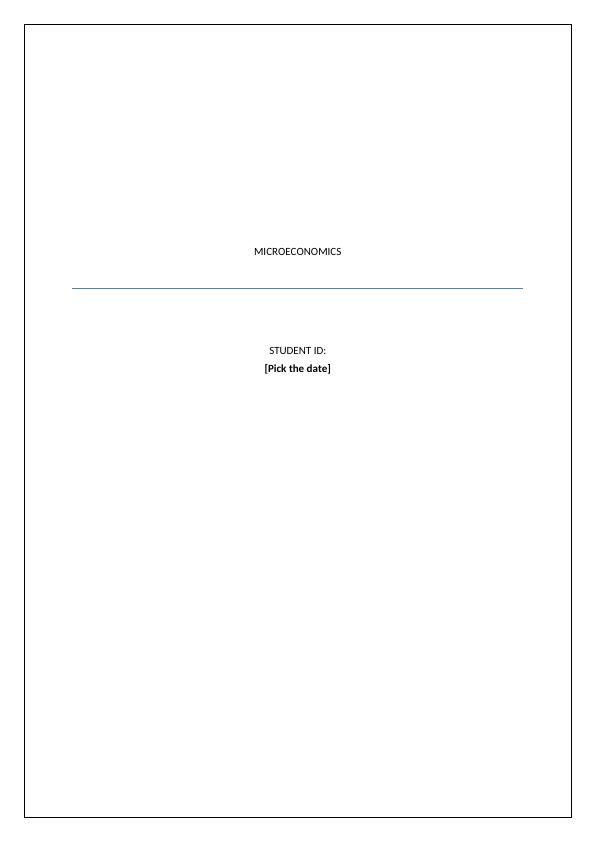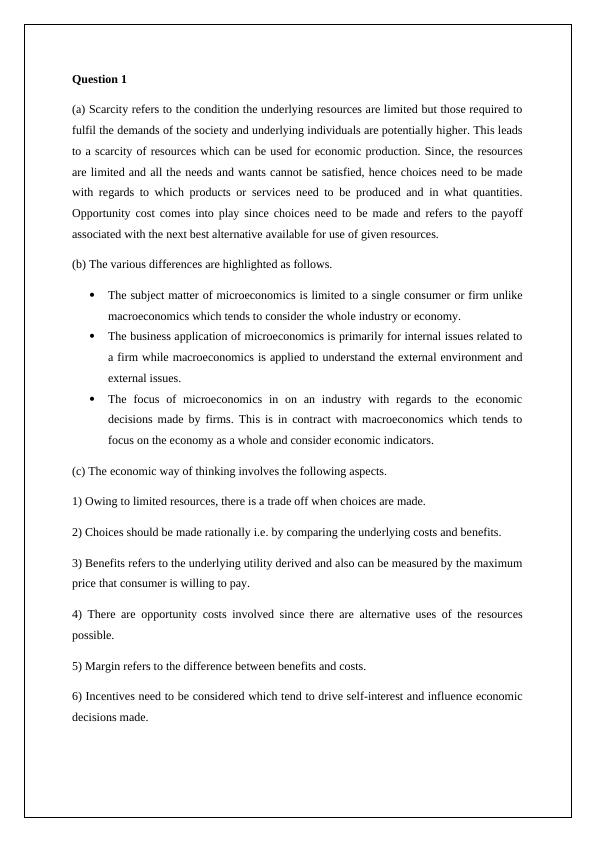Microeconomics: Scarcity, Equilibrium, Price Controls and Elasticity
Tutor-marked Assignment 1 for the course BBM102/05 Microeconomics in Semester 1 of 2018. The assignment covers topics in Units 1 and 2 and consists of four questions. The submission deadline is 7 September 2018.
5 Pages1088 Words266 Views
Added on 2023-06-04
About This Document
This article covers the concepts of scarcity, equilibrium, price controls and elasticity in microeconomics. It includes solved examples and explanations of the economic way of thinking. The article discusses the difference between microeconomics and macroeconomics, the concept of opportunity cost, the impact of price controls, and the calculation of price elasticity. It also provides solutions to problems related to equilibrium and cross elasticity.
Microeconomics: Scarcity, Equilibrium, Price Controls and Elasticity
Tutor-marked Assignment 1 for the course BBM102/05 Microeconomics in Semester 1 of 2018. The assignment covers topics in Units 1 and 2 and consists of four questions. The submission deadline is 7 September 2018.
Added on 2023-06-04
ShareRelated Documents
End of preview
Want to access all the pages? Upload your documents or become a member.
Microeconomics
|10
|1299
|403
Microeconomics: Equilibrium, Price Elasticity of Demand, and Cross Elasticity of Demand
|4
|589
|441
(solved) Assignment on Economics
|24
|4778
|43
Economics Assignment Questions and Answers
|5
|619
|140
Business Economics Report 2022
|21
|4212
|31
Microeconomics - Study of Scarcity, Demand, Supply, Opportunity Cost and Price Elasticity
|3
|607
|399


